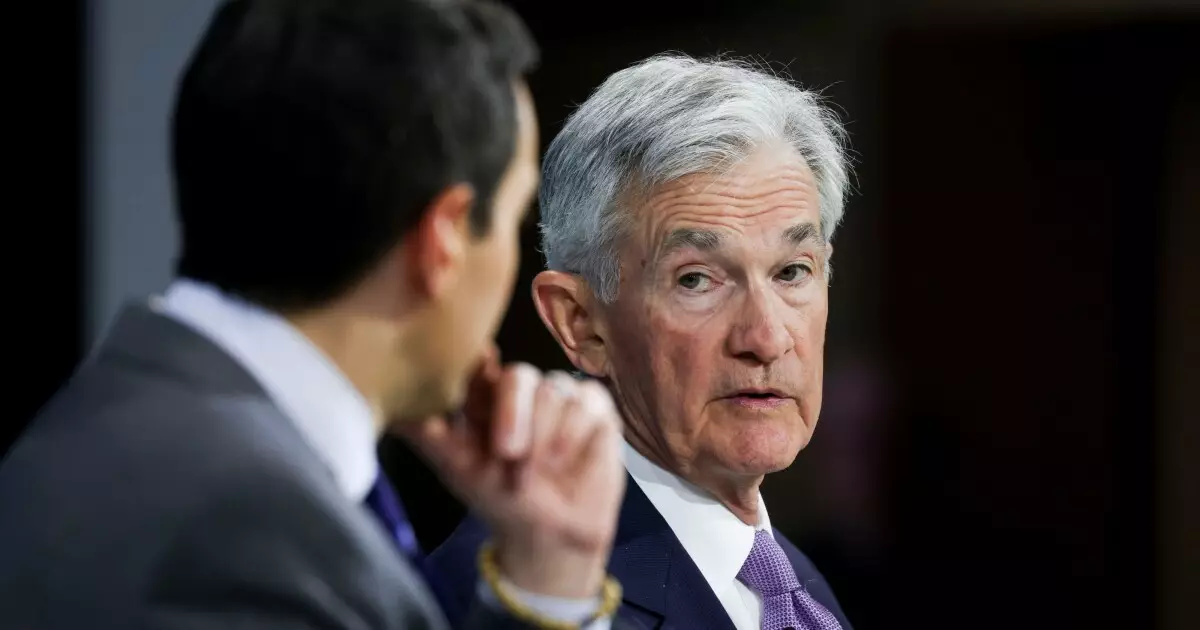In a recent conversation at the New York Times’ Dealbook Summit, Federal Reserve Chair Jerome Powell addressed concerns surrounding his position, especially in the context of the Trump administration’s expected influence on Federal Reserve policy. Specifically, Powell was questioned about the notion of a “shadow chair,” as proposed by Scott Bessent, who was nominated for Treasury Secretary by Trump. The essence of this speculation is that the incoming administration could undermine Powell’s authority leading up to the expiration of his term in 2026, by establishing a parallel source of influence over monetary policy.
Powell dismissed these worries, emphasizing that such speculations do not reflect the reality of his role. He articulated a vision of continuity in the professional relationships he anticipates with the new administration, especially with the Treasury Department. His comments underscore the historical precedent of regular communication and collaboration between the heads of these two crucial financial institutions.
The Importance of Trust and Collaboration
During the dialogue, Powell highlighted the longstanding tradition of weekly meetings between the Treasury Secretary and the Fed Chair, which have taken place over the last 75 years. He underlined that while mutual respect and clear boundaries are vital, a cooperative relationship is indispensable, particularly during times of economic crisis. This perspective illustrates the intricate and often symbiotic relationship that exists between the Federal Reserve and the Treasury, rooted in necessity and legislative frameworks.
Powell’s assertion that he expects to uphold this tradition of collaboration is significant. It encapsulates the essence of functional governance, suggesting that continuity in leadership roles can lessen disruption and maintain stability in economic policy amidst political shifts.
The Federal Reserve’s independence has been a cornerstone of its operation, enabling it to make decisions that align with the broader economic needs of the nation rather than political pressures. Powell was forthright in relaying the essential nature of this independence, stating that it allows the Fed to function autonomously and make policy decisions that serve the interests of all Americans, devoid of partisan influences.
This independence is not merely a theoretical ideal; it is a practical necessity given that the Federal Reserve is a congressionally mandated entity and operates under specific statutory limitations. By framing the Fed’s independence in this manner, Powell defends the institution against potential encroachments from political entities, reaffirming its functionality as a stabilizing force in financial systems.
Powell also discussed the uncertainties associated with President Trump’s proposed tariffs and how these could affect monetary policy. At this juncture, he refrained from making definitive predictions, emphasizing the need for more clarity regarding the scope and implications of these tariffs. His measured approach highlights a critical responsibility of the Federal Reserve: to be responsive yet prudent in the face of shifting economic policies.
When asked about the growing digital asset landscape, Powell acknowledged the Fed’s limited role in monitoring cryptocurrencies, focusing primarily on their interactions with traditional banking. His remarks emphasize the Fed’s commitment to safeguarding the financial system while ensuring consumer protection in the rapidly evolving digital economy. This blend of vigilance and adaptability is emblematic of the Fed’s broader mission.
Ultimately, Jerome Powell’s remarks reflect a steadfast commitment to maintaining monetary policy independence while also navigating the potential disruptions caused by the incoming administration. The historical context of collaboration between the Fed and Treasury, as well as the vigilant stance on ensuring a stable financial environment, underscores Powell’s determination to serve the broader public interest amidst ever-changing political landscapes.
In a time of uncertainty, Powell’s perspective offers a balanced view of how institutional integrity and political realities can coalesce effectively without sacrificing the core tenets of economic governance. This narrative resonates with the understanding that economic stability often hinges on maintaining clear boundaries while fostering a cooperative ethos among key financial leaders.

